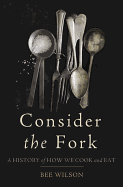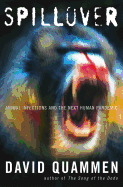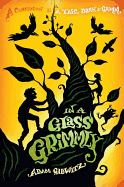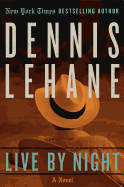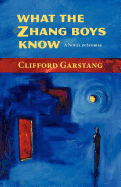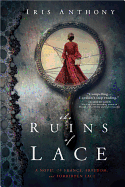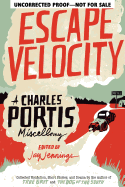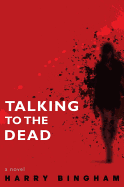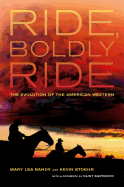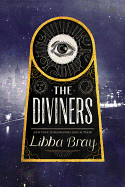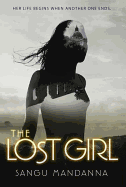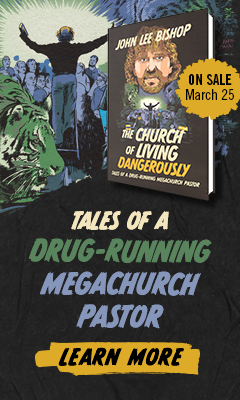Week of Friday, October 5, 2012
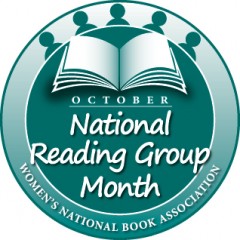 In connection with National Reading Group Month, which is sponsored by the Women's National Book Association and is designated for October, the Great Group Reads Selection Committee has chosen 19 novels and one memoir as this year's Great Group Reads. The titles, recommended for reading groups at bookstores, libraries, online and elsewhere, are:
In connection with National Reading Group Month, which is sponsored by the Women's National Book Association and is designated for October, the Great Group Reads Selection Committee has chosen 19 novels and one memoir as this year's Great Group Reads. The titles, recommended for reading groups at bookstores, libraries, online and elsewhere, are:
The Absolutist by John Boyne (Other Press)
An Age of Madness by David Maine (Red Hen Press)
The Art of Fielding by Chad Harbach (Back Bay Books)
The Art of Hearing Heartbeats by Jan-Philipp Sendker (Other Press)
Blue Asylum by Kathy Hepinstall (Houghton Mifflin Harcourt)
Boleto by Alyson Hagy (Graywolf)
The Dovekeepers by Alice Hoffman (Scribner)
Equal of the Sun by Anita Amirrezvani (Scribner)
Faith by Jennifer Haigh (Harper Perennial)
I Married You for Happiness by Lily Tuck (Atlantic Monthly Press)
In the Shadow of the Banyan by Vaddey Ratner (Simon & Schuster)
A Land More Kind Than Home by Wiley Cash (Morrow)
The O'Briens by Peter Behrens (Pantheon)
The Orchardist by Amanda Coplin (Harper)
The Right-Hand Shore by Christopher Tilghman (Farrar, Straus & Giroux)
Running the Rift by Naomi Benaron (Algonquin)
Salvage the Bones by Jesmyn Ward (Bloomsbury USA)
The Snow Child by Eowyn Ivey (Reagan Arthur Books)
What Alice Forgot by Liane Moriarty (Berkley)
Why Be Happy When You Could Be Normal? by Jeanette Winterson (Grove Press)
The committee sought "under-represented gems from small presses and lesser-known mid-list releases from larger houses. All are books with strong narratives peopled by fully realized characters; books which perhaps have flown under the radar of reviewers and reading groups overwhelmed by the sheer number of new releases each year."
Live by Night
by Dennis Lehane
Live by Night is the second book in Dennis Lehane's trilogy set in the early 20th century, extending the story that began in the epic The Given Day into the Prohibition era. Joe Coughlin is the troublesome son of a Boston police captain; whenever anyone tries to label Joe a gangster, he insists he's an outlaw and there's a difference.
A stint in jail connects the young outlaw with a mob boss and then a job in Ybor, Fla., running rum. Wheeling and dealing, forging relationships and chasing off the competition, Joe proves his worth to the bosses. However, his determined efforts to remain an outlaw in the world of mobsters may prove to be his Achilles heel.
At the heart of Lehane's novel, readers will find a love story wrapped in a crime story, infused with a character study, submerged in a social novel and then topped off in a period piece--and the complexity and interdependence of all these layers make Live by Night irresistibly compelling. Lehane's extensive knowledge of both the period and the geography is undeniable, and his delineation of the cultural and social hierarchies in his Southern Florida setting builds an atmosphere reminiscent of both F. Scott Fitzgerald and Langston Hughes.
And, ultimately, there's no denying Lehane's distinct sound. His sharp dialogue, dark humor and stunning prose make gritty gangsters simply gorgeous. Whether you've read The Given Day or not, Live by Night is a must. --Jen Forbus of Jen's Book Thoughts
Discover: The son of a crooked Prohibition-era police captain learns whether he has what it takes to live by the rules of the night.
The Weight of Temptation
by Ana Maria Shua, transl. by Andrea G. Labinger
Welcome to the Reeds, a penal colony for over-eaters. Minimum stay: three months. Be prepared to be addressed as fatty and subjected to a near-starvation diet. No cell phones allowed. Talking about food is forbidden. Weigh-ins are mandatory. The watchtowers are manned at night.
In The Weight of Temptation, Ana Maria Shua defines her characters by their poundage, writing in a familiar inner voice of excuses and guilty rationalization. Slices of forbidden bread are fondled ecstatically. Dog kibble is a black market delicacy. Courting lovers share sweaty lumps of chocolate candy.
Her brave fatties are swiftly sketched but unpredictable, with human contradictions and depth: Denise the librarian, with a literary example for every occasion; Alex the sexy restaurant owner who would have been attractive 100 pounds earlier; Jughead, a 6'7", 600-pound mass of pure love who unchecked could eat himself to death; and the 16-year-old, 300-pound Carola, who leads the adolescent revolution taking over the fat farm.
But it is Marina Rubin around whom the novel ultimately revolves. Marina gained 22 pounds in her first year of marriage. She gained another 48 pounds in her first pregnancy; her second pregnancy got her 35 more. Now, at 5'2" and age 43, she weighs 207 pounds. Her desperate search for the right doctors, the right program, the right drug have led her to pay the exorbitant fee, say goodbye to her family and enter the Reeds.
Are thinness, youth and beauty really the essential values of the human race? Science fiction, allegory or parody, this tasty little novel serves up a witty parody of today's calorie-obsessed culture. --Nick DiMartino, Nick's Picks, University Book Store, Seattle
Discover: A bleak, drily funny dystopian novel from Argentina set on a fat farm, where calories and weigh-ins become a nightmarish way of life.
What the Zhang Boys Know
by Clifford Garstang
Inside the Nanking Mansion, a 12-unit tenement rehab near Washington, D.C.'s haphazardly gentrifying Chinatown, you'll find a contemporary urban Yoknapatawpha County. The hodgepodge community of artists, writers, romantic couples, immigrants, low-level Washington attorneys, real estate developers and bureaucrats in Clifford Garstang's What the Zhang Boys Know is a mosaic of our own world of modest ambitions, disappointments and underlying compassion.
Garstang's "novel in stories" shows a strong command of character and voice, with frequently lyrical descriptive details. A schoolteacher, for example, recounts his walk to work "on a glorious damp Friday, when the daffodils had just opened, bringing color back to D.C. after a bleak winter filled with government scandals and terror alerts. The sunny darlings were everywhere the sight of those buttery trumpets put a spark in my step." Of course, it is not all flowers and sunshine in the Nanking Mansion. The recently widowed Chinese immigrant Zhang Feng-qi must bring his dying father from Shanghai to care for his two young sons. A gay couple's beloved pet is dog-napped during a mugging and their relationship unravels; one of them stubbornly takes to his bed where he can only stare off with "eyes sad as an Emily Dickinson poem."
"[On] a street where refurbished Victorians rubbed shoulders with burned-out brownstones and crackhouses," Garstang has one prospective buyer say of this Faulknerian world, "the condo building, at least, seemed like a self-contained oasis." Garstang's finely painted portrait of displaced people who find support in each other is its own "buttery trumpet" in a cacophonous landscape. --Bruce Jacobs, founding partner, Watermark Books & Cafe, Wichita, Kan.
Discover: A tight, lyrical novel told in 12 stories of disparate neighbors living in uneasy harmony in a gentrified Washington, D.C. condo.
Toby's Room
by Pat Barker
The First World War is the inspiration for Pat Barker's best fiction. The British novelist, best known for her Regeneration trilogy, returned to the trenches in her 2007 novel Life Class, and Toby's Room digs deeper into that novel's characters and their relationships.
In 1912, Elinor Brooke is a free-spirited art student at London's Slade School of Art studying under surgeon and artist Henry Tonks. He wants her to bolster her figurative work with a better understanding of the building blocks of the body, and urges her to take an anatomy dissection class at the nearby medical school, where her brother Toby is training to be a physician.
Elinor becomes romantically entangled with two classmates, including the dashing and talented Kit Neville. Then war begins, and the men ship off to France while she retreats to her painting, occasionally joining the Woolfs and Bells for Bloomsbury weekends of art, literature and pacifism.
Barker jumps ahead to 1917, as Elinor receives word that Toby is missing in action. Kit returns from the front with a horribly disfigured face and becomes a patient at the hospital where Elinor is now working with Tonks to illustrate surgeries. Kit served in Toby's unit, so Elinor is determined to learn from him what really happened to her brother. With a blunt realism that fits the brutality of the war, Barker successfully integrates the real-life history of Tonks and the Bloomsbury Circle with the passion, jealousy and fragility of her characters. Barker's Great War is no Downton Abbey. Instead, she dives deep into the end of the romantic British Empire and the beginning of modern British existential ambiguity. --Bruce Jacobs
Discover: Booker winner Pat Barker's new novel unravels the secrets of characters introduced in Life Class as they deal with the horrors of the Great War.
The Ruins of Lace
by Iris Anthony
Banned by King Louis XIII, yet highly desired by courtiers and merchants, Flemish bobbin lace was both currency and contraband in 17th-century France. Through seven points of view, Iris Anthony weaves the intricate story of a single length of lace and its impact on many lives in The Ruins of Lace.
Katharina has woven lace under the watchful eyes of nuns until she has nearly lost her own sight, but she cannot imagine doing anything else. Since Lisette incurred the wrath of a visiting count, he has threatened her family with ruin unless they can provide the lace he craves. Denis, a border guard, struggles to understand lace's appeal, while a dog used to run lace from Flanders to France understands only that lace must be very important to humans. These and other stories begin as separate threads, but Anthony weaves them together until each strand becomes essential to the novel's overall pattern.
The complex plot is the strongest feature of The Ruins of Lace; the multiple narrators make it difficult to get a clear picture of any one character. However, the historical detail is fascinating, from the methods used to run lace (coffins, dogs, hollowed-out loaves of bread) to the strict social boundaries expressed through fabrics, weapons and household goods. The abrupt ending feels as though Anthony snipped off all seven threads at once, but the glimpse she offers into the 17th-century's passion for fine lace are both intriguing and entertaining. --Katie Noah Gibson, blogger at Cakes, Tea and Dreams
Discover: A complex novel whose plot threads form a pattern as elegant and intricate as the lace at its center.
Escape Velocity: A Charles Portis Miscellany
by Charles Portis; Jay Jennings, editor
Charles Portis wrote one of Garrison Keillor's favorite novels; Jonathan Lethem calls him "everybody's favorite least-known great novelist"; and Roy Blount, Jr. says Portis "could be Cormac McCarthy if he wanted to, but he'd rather be funny." When the New York Herald Tribune folded and Portis quit his journalism job, according to Tom Wolfe, he moved back to Arkansas, wrote novels and got rich off the royalties after his novel True Grit became one of John Wayne's last great films: "It was too goddamned perfect to be true," Wolfe wrote, and yet there it was." Then, like Salinger, Portis pretty much disappeared to live an ordinary life, laboring over his writing until he got it perfect.
He continued to write, including four more brilliant novels, the last of which came out in 1991. (All of them have been reissued and kept in print by Overlook Press.) In editing Escape Velocity, Jay Jennings has done a terrific job of tracking down many of Portis's works, including some stunningly good examples of his early newspaper reporting, as well as short stories, travel pieces, a memoir and a never-before-published comic three-act play, Delray's New Moon.
Escape Velocity, following Joel and Ethan Coen's remake of True Grit, could bring about a well-deserved revival for the nearly 80-year-old Portis. The title comes from his novel The Dog of the South: "A lot of people leave Arkansas and most of them come back sooner or later," Portis wrote. "They can't quite achieve escape velocity." --Tom Lavoie, former publisher/Arkansas resident
Discover: A stunning collection of writings by a reclusive Arkansas author who, in the words of Nora Ephron, "thinks things no one else thinks."
Mystery & Thriller
Talking to the Dead
by Harry Bingham
Fiona Griffiths, the protagonist in Harry Bingham's debut novel, Talking to the Dead, will likely be compared with a certain Swedish girl with a dragon tattoo, but she's no imitation. Rather, she's one of the most unusual characters to come along in crime fiction in recent memory. Despite a psychological condition that makes her feel disconnected from emotions, she's a fiercely smart, highly efficient detective constable in Cardiff, Wales.
When Fi investigates a former cop accused of embezzlement, she soon becomes involved in the case of a prostitute killed, along with her six-year-old daughter, in a filthy squat house. A credit card belonging to a multimillionaire is also found at the scene. The problem? He's been dead for months. Did the prostitute know the millionaire? Do the murders have anything to do with the embezzlement case?
It's good news that this is the first in a series because Fi is an indomitable character whose mysterious past should provide fodder for a few more books. As she points out: "Fi. That's if backward. Griffiths... two more ifs lurking at the heart of it. My name, literally, is as iffy as you can get." Though she feels removed from those around her, the first-person narration and witty observations (though perhaps they're not funny to her) make her accessible to readers. Furthermore, her supportive family is a welcome break from the cliché of heroes coming from broken homes. Fi isn't damage-free, but she's fully dimensional--and not iffy at all. --Elyse Dinh-McCrilllis, freelance writer/editor, blogging at Pop Culture Nerd
Discover: A Welsh police investigator with a truly unusual background makes her debut in this fiercely smart mystery.
Food & Wine
Consider the Fork: A History of How We Cook and Eat
by Bee Wilson
Food writer and historian Bee Wilson delves into the lineage of the cookware, utensils and appliances we use to prepare our meals in Consider the Fork, a surprisingly entertaining history of kitchen technology.
Here technology simply refers to any tool invented for a purpose. Wilson says, "It took countless inventions, small and large, to get to the well-equipped kitchens we have now." She considers how cultural influences have changed the way people prepare and eat their meals throughout history, as well as how cooking implements have left their mark on civilizations. Some ancient cultures, such as the Funnelbeaker culture of Neolithic Europe, are even named for the distinctive types and shapes of their pottery. Wilson primarily addresses the birth and growth of Western cooking, but also covers countries and tribes the world over, including the Maori of New Zealand, who traditionally cooked their food over the naturally occurring boiling pools of the Whakarewarewa hot springs.
Wilson's sprightly, knowledgeable voice skips nimbly through the narratives of pots and pans, knives, grinding implements and eating utensils, working up to the theme of the kitchen as a whole. Short asides on particularly interesting niche items such as the mezzaluna, rice cooker and toaster provide quick, fascinating epilogues to each chapter. Her insights will change the way you look at your kitchen accoutrements. Take the blunt butter knife, descendent of the deadly and versatile medieval belt knife: "It takes a civilization in an advanced state of politesse--or passive aggression--to devise on purpose a knife that does a worse job of cutting." --Jaclyn Fulwood, blogger, Infinite Reads
Discover: The hidden history of your kitchen is revealed through Wilson's engrossing, entertaining look at culinary technology through the ages.
Science
Spillover: Animal Infections and the next Human Pandemic
by David Quammen
Hanta virus, West Nile virus, SARS, Q fever--these are just a few of the deadly diseases David Quammen (The Song of the Dodo) dissects in his haunting and authoritative Spillover. Quammen explains: "When a pathogen leaps from some nonhuman animal into a person, and succeeds there in establishing itself as an infectious presence, sometimes causing illness or death, the result is zoonosis." This process of "spillover" occurs all around the world, with the spread of infection from new or previously unknown diseases becoming more rapid as people travel for work and pleasure. Outbreaks can happen suddenly and rapidly--transmitted by a sneeze, a cough, a mosquito bite--whenever the number of nonimmune individuals is higher than those who are immune.
Well-researched and descriptive, but not lurid (think The Hot Zone), Spillover takes readers from the jungles of Africa in search of Ebola to rat farms in China (rats and bats carry many "spillover" diseases and are also on many Chinese dinner menus) to the Netherlands in search of the viruses and bacterium that can jump from an animal host to a human. Quammen provides in-depth analysis of each disease, its effect on humans and a sympathetic view of the men and women who are putting their lives on the line to study them. Spillover is full of death--painful, bloody and shocking--and the stuff of nightmares: bats, rats, snakes and "walls... alive with thirsty ticks." But this should not detract readers from Quammen's engrossing and scientific investigation. --Lee E. Cart, freelance writer and book reviewer
Discover: A thorough and fascinating analysis of some of the world's deadliest diseases.
Performing Arts
Ride, Boldly Ride: The Evolution of the American Western
by Mary Lea Bandy and Kevin Stoehr; foreword by Clint Eastwood
In his foreword to Ride, Boldly Ride, Clint Eastwood tells us the "public's recognition of the Western movie as a genuine art form was a long time coming." This is the paradox at the heart of this fascinating book: How could our most popular film genre take so long to get the respect it deserved? Thanks to Mary Lea Bandy and Kevin Stoehr, we now have a clear and thorough explanation.
It was D.W. Griffith, they explain, who "helped to establish the western film as a specific form of visual and narrative art." Subsequent movies further shaped the Western's defining themes: the "Westerner" himself, his weapon, survival on his own terms, the land (especially water) and the importance of law and order.
Bandy and Stoehr touch upon many of the genre's greatest icons, including Red River ("one of the most enduring of westerns"), The Searchers ("now considered one of America's greatest films") and the "brilliant and bloody" The Wild Bunch. There's a whole chapter on Eastwood's contributions to the genre, as both an actor and a director, focusing on The Unforgiven. Even the postmodern era is represented by films like No Country for Old Men, There Will Be Blood and Cowboys and Aliens, all with their "self-conscious response to a wide-ranging era of western films." As the credits roll, we are reminded that the Western's "clearest expression of journey, adventure, and expansionism has been the journey, adventure, and expansionism of the genre itself." --Tom Lavoie, former publisher
Discover: A fascinating inquiry into how the lowly American Western evolved into one of our most respected and beloved film genres.
Children's & Young Adult
In a Glass Grimmly
by Adam Gidwitz
In this bewitching companion to A Tale Dark and Grimm, Adam Gidwitz blends Grimm tales with the works of Hans Christian Andersen.
"Once upon a time, fairy tales were horrible," says the snarky narrator, who returns to share the truth behind these fairy tales. Often the narrator's gallows humor balances warnings to readers about the depths of the stories' darkness, cruelty and bloodshed. A wishing well grants a frog his desire to speak to a beautiful sky-eyed princess, in hopes that she will be his friend. Instead, she attempts to murder him by hurling him against a wall and breaks his heart (and his leg). Then: "Things get worse." After Jill, daughter to a beautiful yet cruel queen, is humiliated ("Emperor's New Clothes"–style) at a royal procession, she encounters that same talking frog, and together they run away to her cousin Jack. A deceptive old woman gets Jack and Jill to swear on their lives (literally)--despite the first of the frog's many protests--to find the Seeing Glass, lost for 1,000 years. In return, they will be worshipped by the whole world. From there, a magic bean sprouts into a beanstalk, and an adventure with brutal giants, cunning goblins and mermaids begins. (Oh, and Jack falls down the hill, and breaks his head wide open--pool of blood included.)
Readers will once again appreciate the narrative logic Gidwitz weaves through these otherwise unconnected retellings and will laugh past his warnings to an uplifting theme about accepting oneself. --Adam Silvera, reviewer and former bookseller
Discover: Jack and Jill climb up a beanstalk in this hilarious companion to A Tale Dark and Grimm.
The Diviners
by Libba Bray
Libba Bray (A Great and Terrible Beauty) braids together the sensuous underworld of 1920s speakeasies, the glamour of the Ziegfeld Follies and a sense of evil greater than Prohibition-era police corruption in her edge-of-the-seat new series.
Seventeen-year-old Evie O'Neill is as complex as Bray's previous series heroine, Gemma Doyle. Her sense of entitlement masks deep sorrow and an intelligence that often goes unappreciated in a male-dominated society. Gemma's tragedy was the death of her mother; Evie's is the death of her brother, James, in the Great War. When Evie gets tipsy at a soiree and performs a party trick that involves holding and "reading" Harold Brodie's class ring, she divulges his shameful secret. Evie's parents send her from Zenith, Ohio, to New York City to board with her Uncle Will until things cool down. Evie's thrilled to head for Manhattan, where her uncle runs the Museum of American Folklore, Superstition, and the Occult. When a string of murders seems to have supernatural ties, New York detectives draw on Will's expertise, and Evie's own "gift" comes into play.
Bray's writing is at her spine-tingling best here (e.g., "Blackened gravestones tilted like crooked teeth in a rotting mouth"). The book is thick, but the pages fly, and Bray leaves hints of a "coming storm" to lure readers back for the next installment. With romance, mystery, glamour and history as bait, Libba Bray is sure to hook new readers as well as welcome back her legion Gemma Doyle series fans. --Jennifer M. Brown, children's editor, Shelf Awareness
Discover: A string of murders that only Evie, with her talents as a Diviner, can solve--if she doesn't become a victim first.
The Lost Girl
by Sangu Mandanna
This literary thriller haunts like Mary Shelley's Frankenstein (from which Sangu Mandanna's inscription is taken) as it explores the line between being a human and a monster.
Eva is an "echo," a creation stitched together by the Weavers using a bit of Amarra's soul. Amarra's family commissioned Eva in case Amarra were to die, to ease their grief. Eva stays in Windermere and studies her other's life with the help of her caretaker, Mina Ma; Erik, who tutors her using Amarra's lesson plans; and her guardian, Sean. Eva desperately wants to be human, and while Sean glorifies her life as an angel among mortals, others view echoes as abominations. Amarra herself considers Eva to be a thief and withholds information about her boyfriend, Ray, to spite her. Eva is forbidden to love anyone who is not Ray, and must follow the life course Amarra would lead. If exposed as an echo, Eva faces the threat of being unwoven by those who created her--or killed by those who fear her.
Like Victor Frankenstein, the Weavers don't love their creations, only their own accomplishments. Frankenstein is banned reading for echoes, to prevent insubordination. Still, Eva proves herself capable of rebellion, time and again.
Mandanna's emotional debut novel is a creation as grave as an echo's life, yet shows how one must rebuild after disaster demolishes everything. --Adam Silvera, reviewer and bookseller emeritus
Discover: A Frankenstein-inspired novel about a girl created to replace the life of a girl who's killed.
| the church of living dangerously |
|


